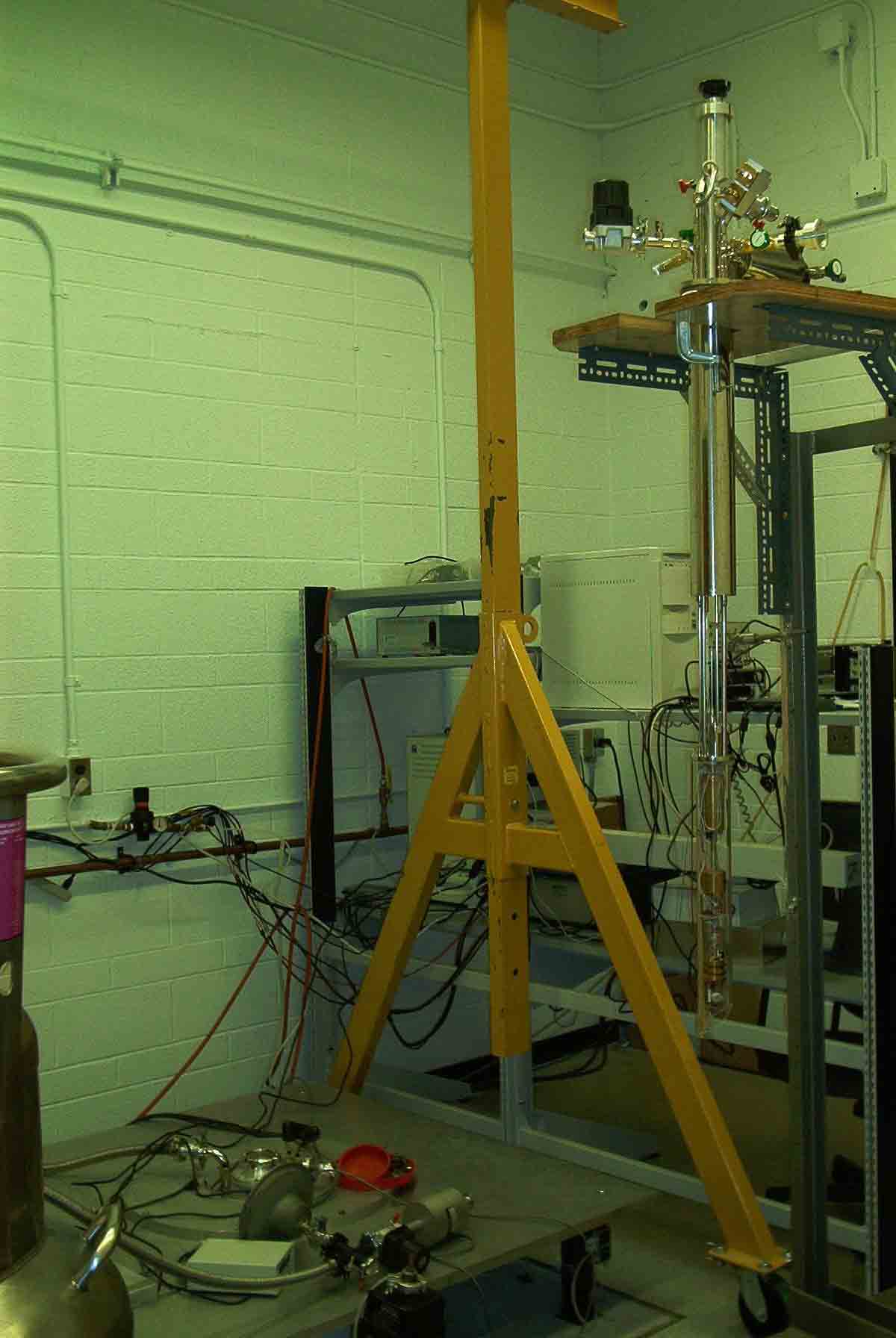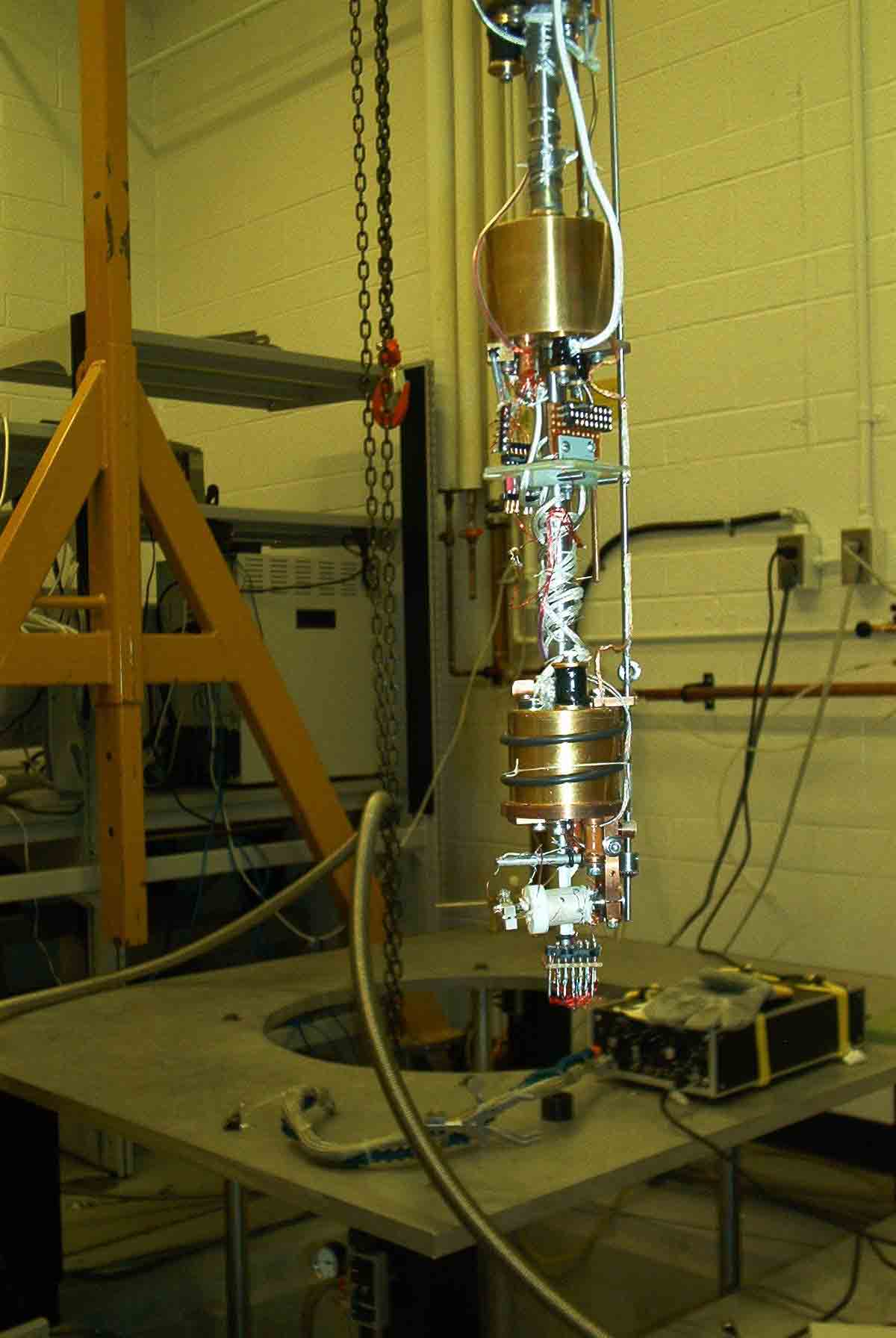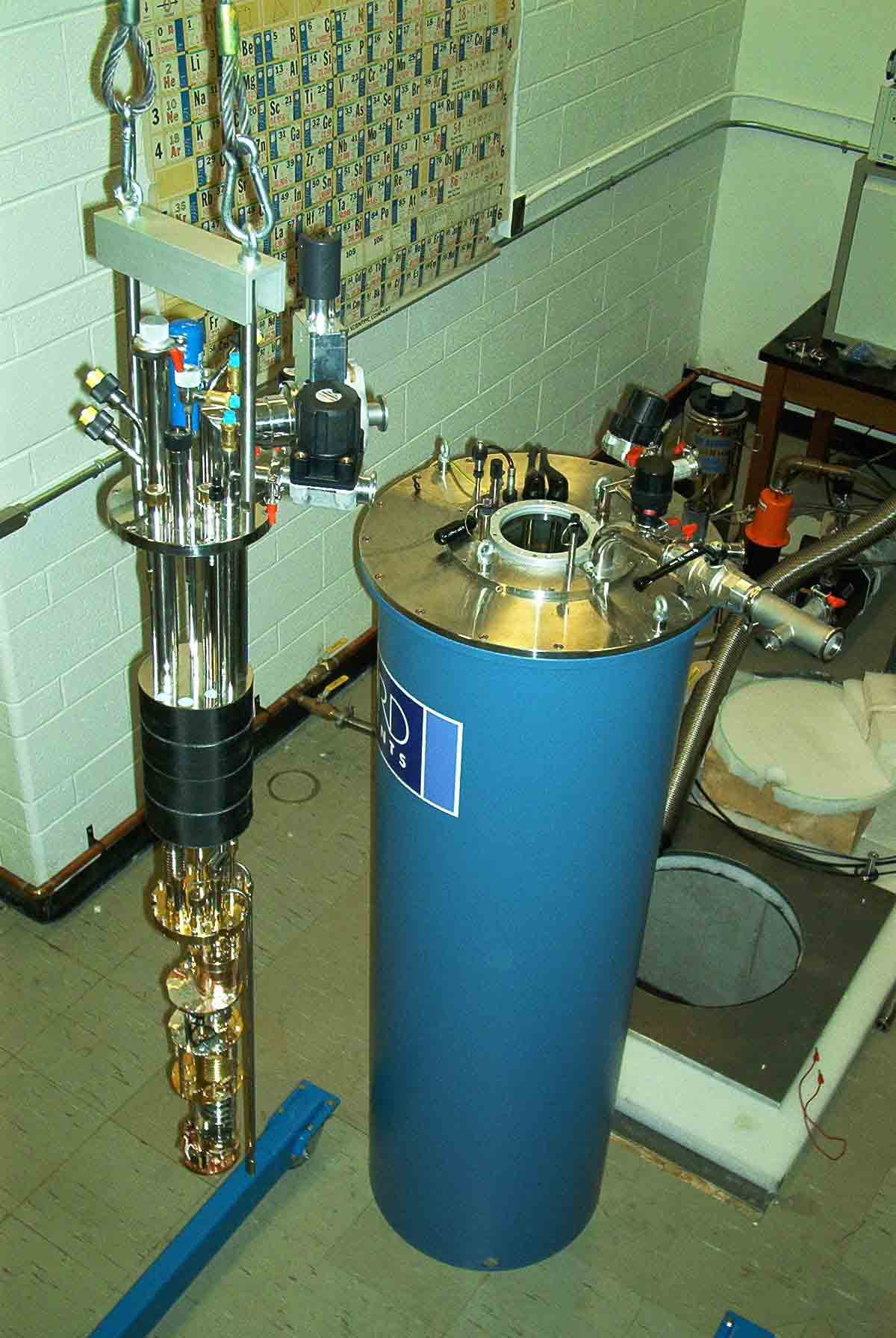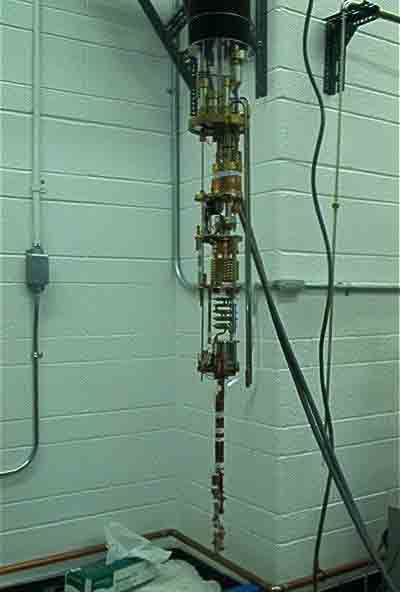Wei GROUP
Cyromagnetics Lab
(MP 078)
Our
cryomagnetic facilities consist of:
- 3He refrigerator (down to 0.3K) with 9-Tesla superconducting magnet
- Dilution refrigerator (down to 10mK) with 18-Tesla superconducting magnet
- Dipper probes for quick access to 4.2 K, zero-field or in-field
- Turnkey PPMS system operating to 1.8K and 14T [CMP group equipment]
3He refrigerator


Our 3He refrigerator is a custom system
made by Janis Cryogenics. It is based on a charcoal sorption-pump
design capable of quiescient operation below 300 mK for over 24
hours. The refrigerator has a
sliding-seal cryostat for quick insertion into a 9-Tesla
superconducting solenoid with a 3-inch bore. The cryostat has two
side bores to enable sample manipulation and optical access. For
this 3He refrigerator we have successfully
developed an STM head capable of in-situ rotation relative to the
magnetic field axis.
Dilution refrigerator
Our
dilution refrigerator (DF) is a Kelvinox 400 system made by Oxford
Instruments. It has a high cooling-power 3He/4He mixing chamber capable of
reaching below 25mK with continuous circulation. To reduce
acoustic noise, our main pumps are enclosed in a separate room. The
18-Tesla magnet has a 2-inch bore and is suspended below ground in a
sub-basement environment. This DF has been the workhorse for our
study of heavy fermion superconductors, using both electrical transport
and Andreev reflection spectroscopy. For the latter, we have
successfully
developed a point-contract spectroscopy (PCS) setup
for measurement down to 90mK and up to 12T. To minimize any Joule
heating in our transport and PCS measurments, we use
a high-sensitivity AC bridge for the resistance and a sub-microsecond
pulse setup for the I-V spectroscopy.


4He
dipper probes
We have
constructed a fleet of probes for quick access to 4.2K by dipping into
liquid 4He storage dewars or superconducting magnets.
These probes are routinely used to characterize our samples, in either
single-crystal, thin-film or nanostructured forms. These
measurements include electrical resistivity, magnetic susceptibility
and I-V spectroscopy, the latter using pulsed signals to minimize Joule
heating. For acoustic isolation, the 4He
dewars can be
air-suspended inside our Stealth Pit. Mu-metal shrouds can also
be used to shield the probes from stray
magnetic fields. Several of our dipper probes are also
exclusively designed to hold STM heads, in two different orientations,
for both zero-field and in-field measurements down to 4.2K. These
4He
STM's have successfully achieved atomic resolution on cleavable single
crystals and imaging of vortex lattice on superconducting
samples.
Turnkey PPMS system
Our PPMS
(Physical Properties Measurement System) setup is made by Quantum
Design. It is a turnkey system capable of reaching 1.8 K and
14 Tesla. It has several sample probes and stages, complete with
both the electronics and software for measuring: resistivity,
magnetization, Hall effect, and heat capacity. This instrument is
shared within the CMP group and maintained by our group technician.